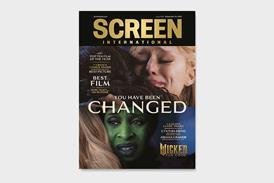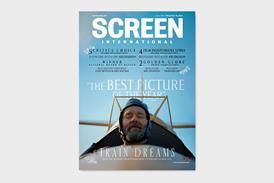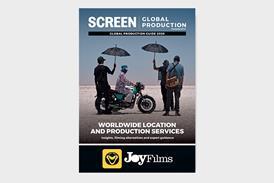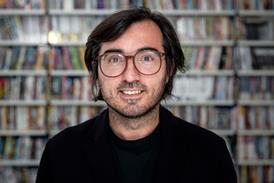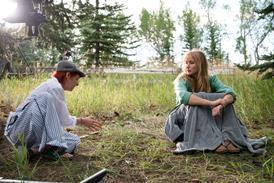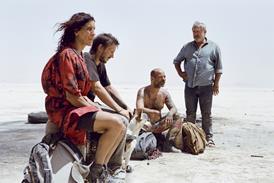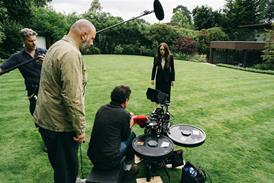Nicolas Graux and Truonh Minh Quy’s film follows a 60-year-old Ruc woman in Vietnam’s Quang Binh province
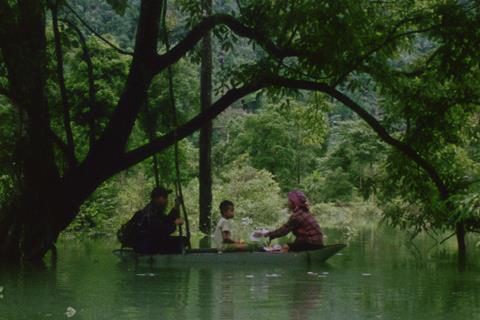
Dir. Nicolas Graux, Truong Minh Quy. Belgium/France/Vietnam. 2025. 71mins
It is all too easy to label certain types of impressionistic cinema ‘poetic’. But Vietnamese character study Hair, Paper, Water… genuinely merits the term for the connections it makes between words, images and consciousness. This concise feature serves as a reminder that documentary can be immersive in a genuine sense, taking the viewer deep into the intimacy of unfamiliar places and cultures – and sometimes of its subjects’ interiority.
Takes a contemplative approach
The film is a collaboration between Belgian director and cinematographer Nicolas Graux, known for 2019 Laos documentary A Century of Smoke, and Vietnamese director Truong Minh Quy – also this film’s editor – whose debut feature Viet & Nam was one of the discoveries of Cannes 2024. Following their short fiction collaboration Porcupine (2023), the entrancing Hair, Paper, Water… should continue to cause ripples on the festival circuit and in specialist slots, following its airings in Locarno (where it won a Golden Leopard and a Special Mention), Busan, New York, London and elsewhere.
At once a character study and a portrayal of a small ethnic group and its language, Hair, Paper, Water… develops an elegant, involving take on the tradition of ethnographic documentary. Its central subject is Cao Thi Hâu, a woman in her 60s, who is a member of the Ruc people of Vietnam’s coastal Quang Binh provice. She speaks in Ruc language voice-over throughout, with specific words and phrases appearing in red-on-black captions. Her home is an agricultural community that cultivates cattle and goats and harvests acacia trees, their pulp used for making paper – one of the key recurring elements that structure the film. But the Ruc culture has its traditional roots in cave dwellings, with Cao Thi Hâu herself born in a cave.
At the start, the film seems to offer a balmily impressionistic view of Vietnamese rural life, with images of dense vegetation and of water dripping in cave mouths – but the initial quiet is disrupted by urban noise, as Cao Thi Hâu makes her first visit to Saigon to look after her granddaughter, who has just given birth. “What kind of place is this, packed with people?” she wonders, as cars speed by and the camera shakes in harmony with the general turmoil.
For the most part, though, the film takes a contemplative approach, with Cao Thi Hâu talking us through sequences that offer elementary lessons in the Ruc language – just as a young grandson of hers learns to read Vietnamese and local schoolchildren study English phrases. What we learn of Ruc comes in the form of the building blocks of a culture rooted in the natural world, with filmed images illustrating words: ‘mountain’, ‘rain’, ‘flood’, ‘buffalo’, leech’ and, significantly, ‘dream’. Ruc knowledge also emerges in the botanical wisdom that Cao Thi Hâu imparts regarding the medicinal use of herbs and fruits.
Graux’s richly coloured 16mm photography favours extreme close-ups that explore the materiality and texture of objects and faces, while Truong’s editing generally emphasises fragmentation, brief images coming across like individual elements in the primer of Ruc knowledge. But there are longer sequences, notably a boat ride through the region in one of its annual floods – with trees and the tops of road signs emerging from the water. There’s also a euphoric sequence in which Cao’s grandson runs on a beach in furious winds.
There is no specific reference to the Ruc people or their language being endangered, but we get the sense that the film is implicitly contributing to their preservation by making them visible. Channelling their depiction very much through the words, knowledge and experience of Cao herself, the directors present their film as being at least partly an insider view. Otherwise, the immersive effect is akin to that created by outsider observers of Asian cultures, for example the film-makers of Harvard’s Sensory Ethnography Lab (Paravel and Castaing-Taylor et al) and Galician director Lois Patiño in his Samsara – and lovers of their work will certainly find rewarding kindred material here.
Production companies: Dérives, petit chaos
International sales: Lights On, lightson@lightsonfilm.org
Producers: Julie Freres, Thomas Hakim, Julien Graff
Cinematography: Nicolas Graux
Editor: Truong Minh Quy

